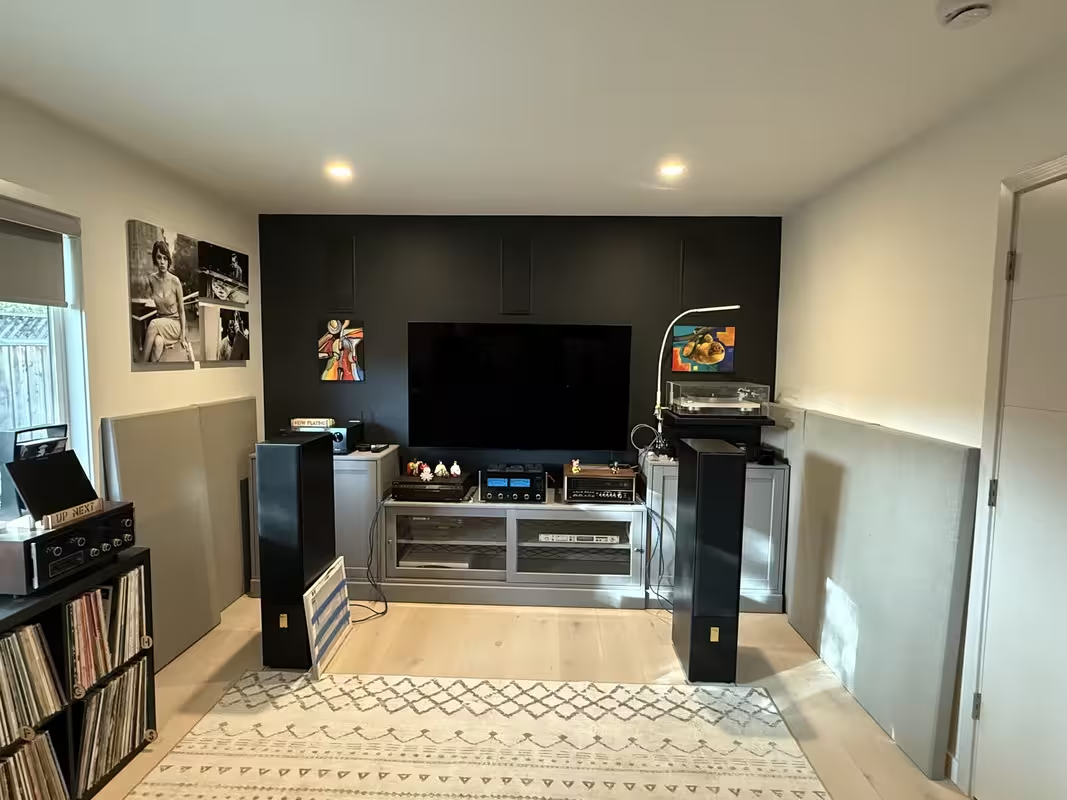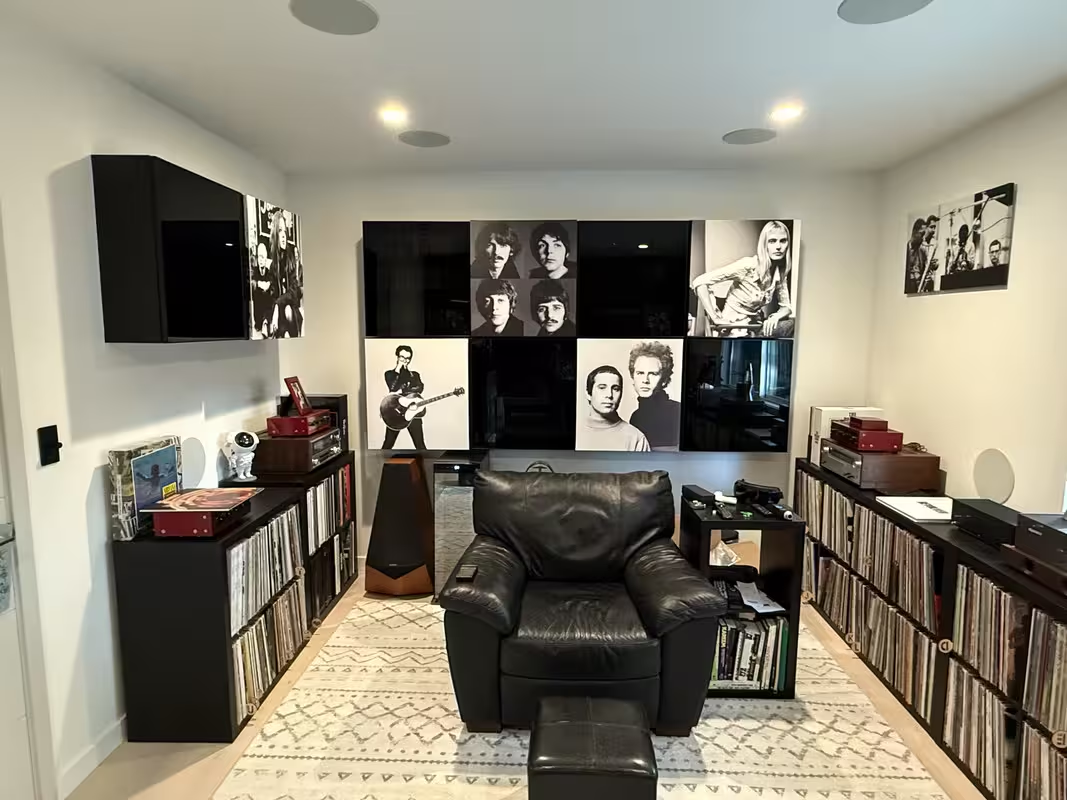Hoping to get some thoughts from the group here.
I recently moved into a dedicated TV/audio room, but the room size is on the small side: 15.5ft x 11.5ft. As pics will show, there's quite a bit in there, so empty volume is decreased further due to that.
I've been using Aerial Acoustics Model 7B speakers, which I've been very happy with in larger spaces, but they seem to be overwhelming the room and I'm getting fairly overwhelming bass. Vocals have sort of a chestiness/congested nature to them, and there are bass undertones to most songs. If I play records loud, I need to activate my rumble filter, which I never used to have to do. As a sidetone, I also have Monitor Audio Gold Reference 20's in my collection.
Preamp is a recapped Mcintosh C35 and amp is a recapped MC2255. Phono pre is a VTL TP 2.5 II, TT is a Marantz TT-15S1 running a SAE1000LT MM cart.
I borrowed a friend's Sonus Faber Electa Amator II's and they sounded very good in my room - sweeter, more natural, no congestion, though I did give up bass slam/impact, which I kind of missed.
Here are pictures of the room:
Front:

Back:

I'm playing around now with plugging the rear ports of the Aerial, as well as putting some acoustic panels in the back corners of the room. Both of those seem to have helped quite a bit.
As far as measurements, those Aerials are currently about 80" apart, 16" from speaker back to front of cabinet, 96" from each speaker to the listening position.
What's your opinion: With some room treatments/plugged ports, can the Aerials work well in a room of this size, or do I need to move toward smaller speakers?
If I go smaller, any thoughts on something like the Sonus Faber Concerto Domus (there's a pair local to me) or Sonetto III? Those seem to be more modestly sized, don't go as low. Would those be at least a lateral to the AA Model 7B's, or a step down in terms of overall speaker quality? I only mention Sonus Faber models as I was impressed with my friend's speakers and generally do enjoy the smoother, more musical speakers and will give up some detail/pinpoint accuracy if needed to avoid brightness/listening fatigue.
Thanks all. . .



